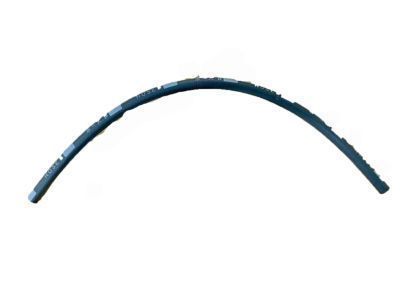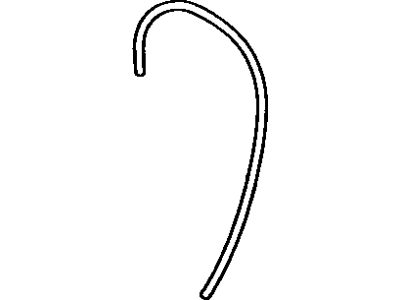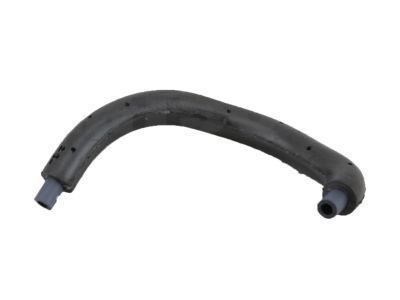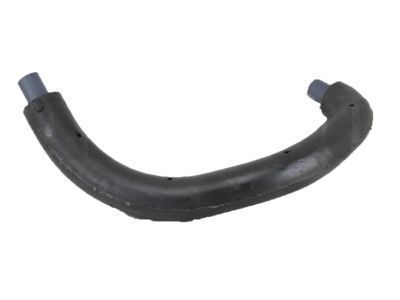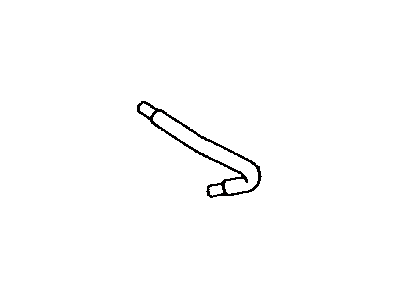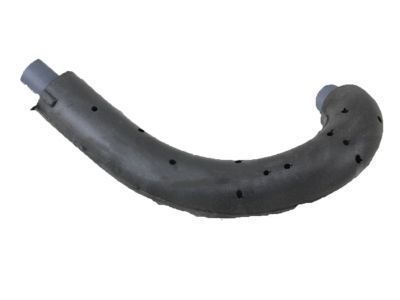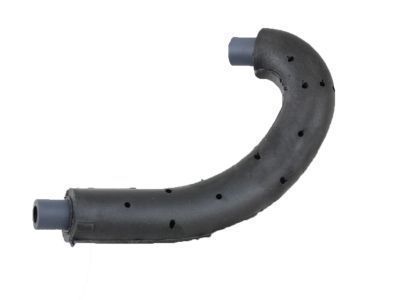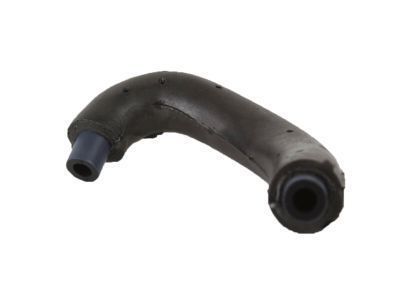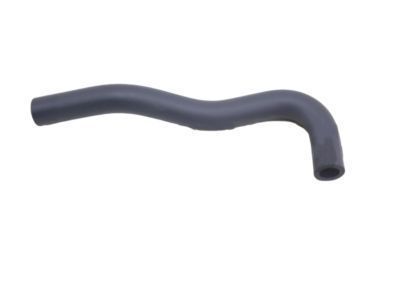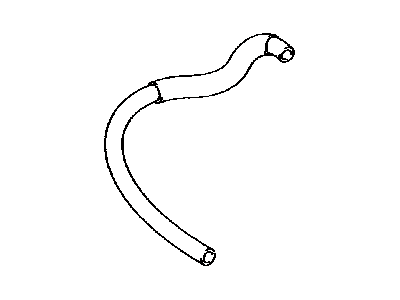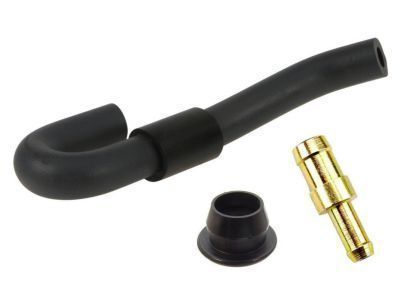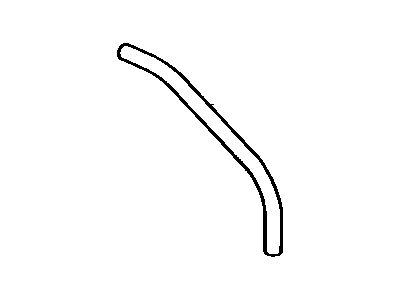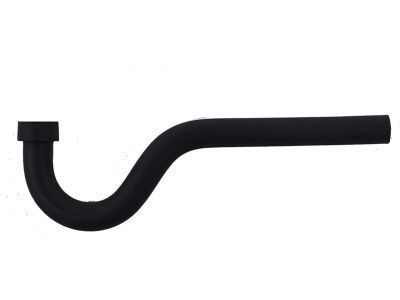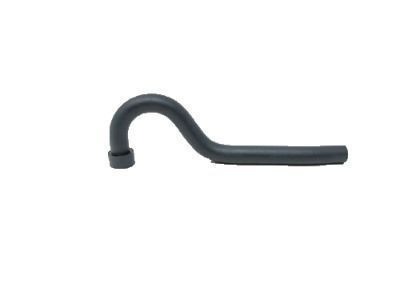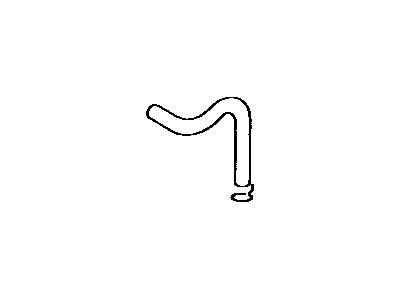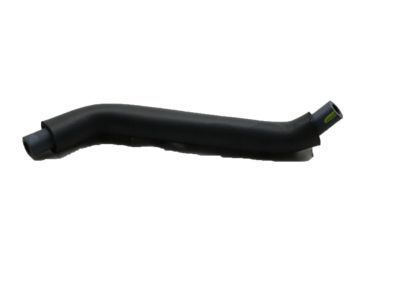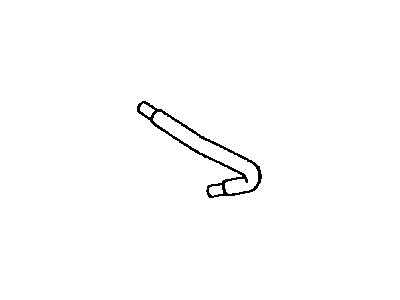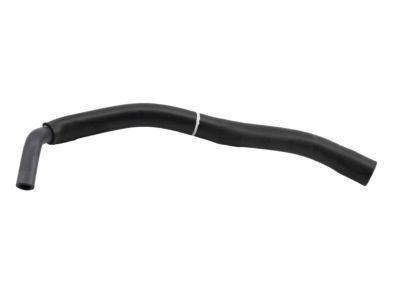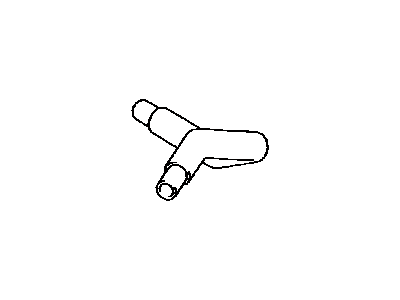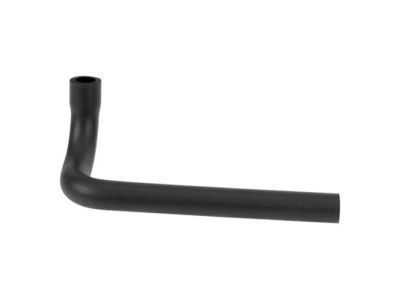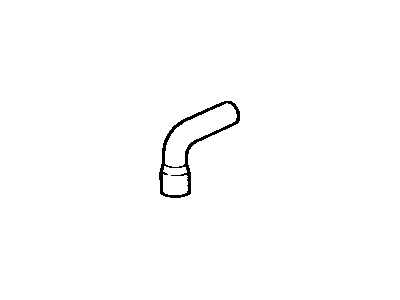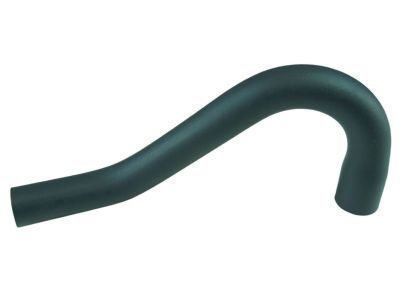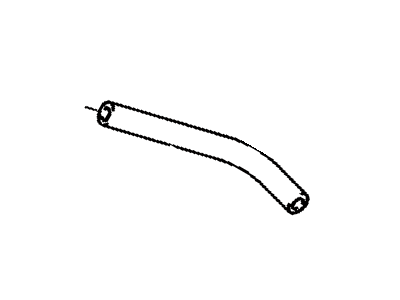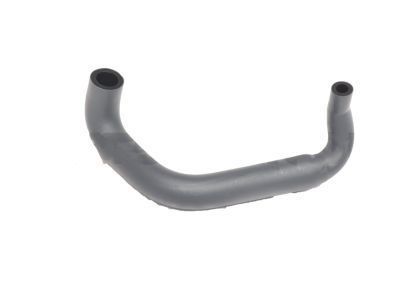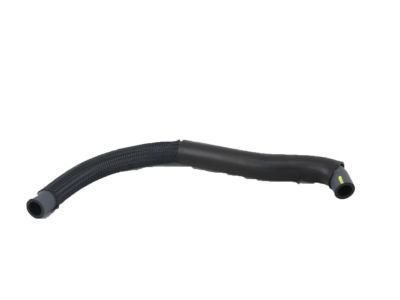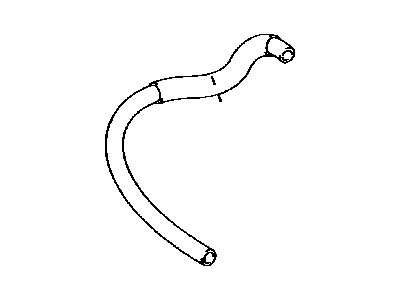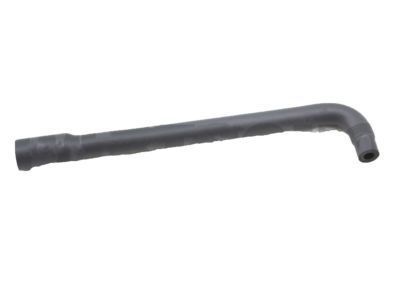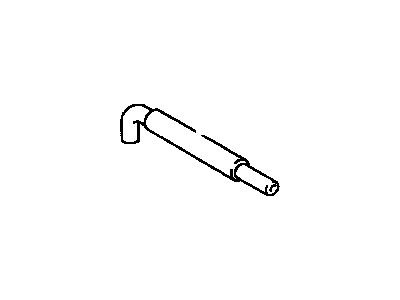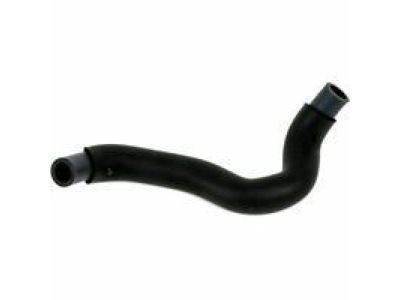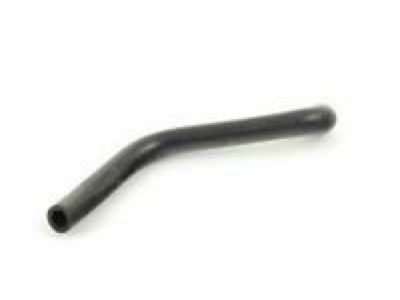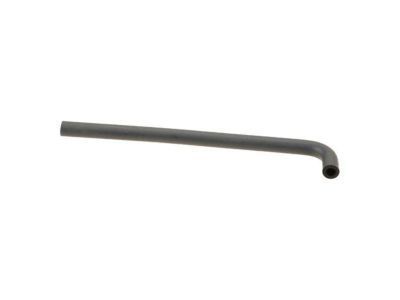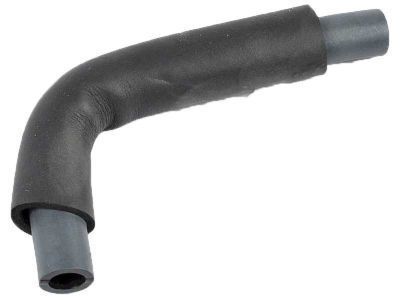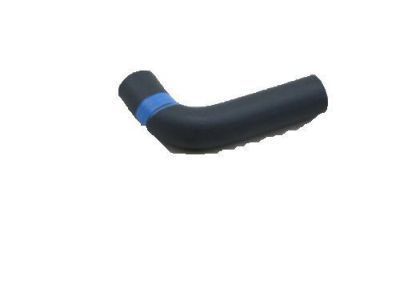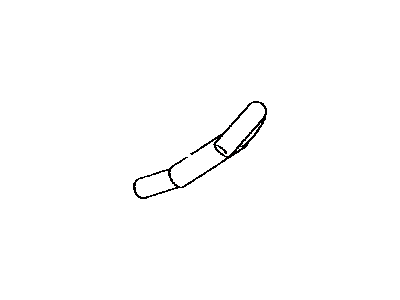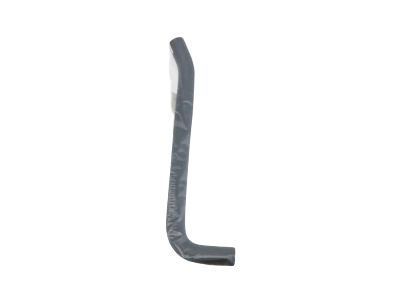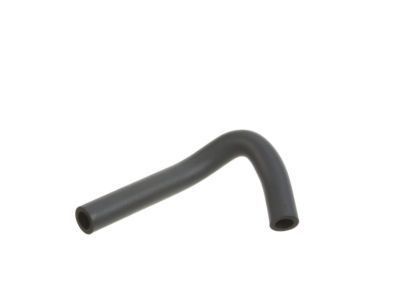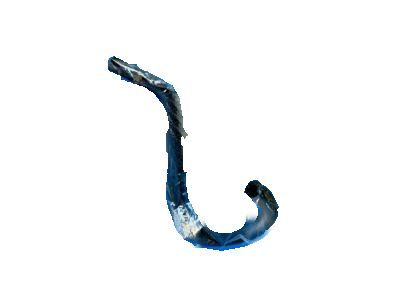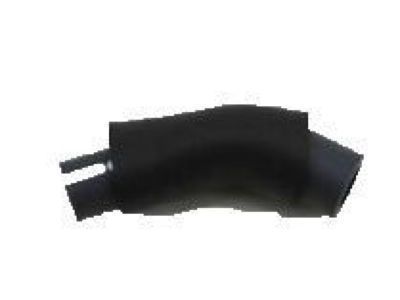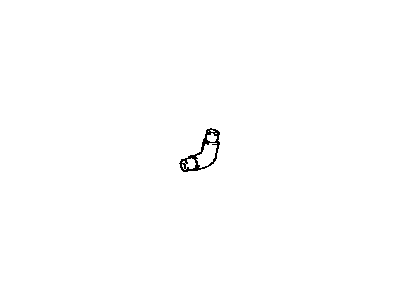Menu


My Garage
My Account
Cart
Genuine Toyota 4Runner PCV Hose
PCV Valve Hose- Select Vehicle by Model
- Select Vehicle by VIN
Select Vehicle by Model
orMake
Model
Year
Select Vehicle by VIN
For the most accurate results, select vehicle by your VIN (Vehicle Identification Number).
36 PCV Hoses found
Toyota 4Runner Vacuum Hose
Part Number: 90999-92002$5.94 MSRP: $8.30You Save: $2.36 (29%)Ships in 1-3 Business DaysADD TO CARTProduct Specifications- Other Name: Hose, Cruise Control Vacuum; Air Hose, Pressure Sensor Tube, Vacuum Hose
- Replaces: 90445-08138, 90445-08179, 95411-10120, 95411-10010, 90447-08127, 90999-02002, 95411-19920, 95411-19918, 21249-13090, 25760-11300, 95411-10107, 95411-10125, 05411-10120, 95411-10130, 95411-19908, 95411-19913, 95411-30030, 95411-19911, 95411-10030
- Warranty: This genuine part is guaranteed by Toyota's factory warranty.
Fits the following Vehicles:- 1984-2024 Toyota 4Runner | DLX, LULI, Limited, SDT, SR5, SR5 Turbo, SR5B, SR5V, STD | 4 Cyl 2.4L, 4 Cyl 2.7L, 6 Cyl 3.0L, 6 Cyl 3.4L, 6 Cyl 4.0L, 8 Cyl 4.7L | 1GRFE, 22R, 22RE, 22REC, 22RTEC, 2L, 2LT, 2LT; LN51L-KRA, 2TRFE, 2UZFE, 3RZFE, 3VZE, 3VZE; LN51L-KRA, 3VZE; RN101L-TRLDEA, 5VZFE; GRN210L-GKAGKA, 5VZFE; RZN180L-GKMSKA, GRN210L-GKAZKA, GRN210L-GKPGKA, GRN210L-GKPZKA, GRN215L-GKAGKA, GRN215L-GKAZKA, GRN215L-GKPGKA, GRN215L-GKPZKA, GRN280L-GKAGKA, GRN285L-GKAGKA, LN51L-KRA, LN51L-KRA3, LN56L-MDA3, LN56L-MDCA, LN56L-MDCA3, LN56L-MDCK, LN56L-MDCXA3, LN56L-MDK, LN56L-MDXA3, LN56L-MRK, LN65L-MDA, LN65L-MDA3, LN65L-MDCA3, LN65L-MDCK, LN65L-MDXA, LN65L-MDXA3, LN65L-MDXK, LN66L-MDCXK, RN101L-TRLDEA, RN101L-TRLDEAB, RN101L-TRLDEK, RN101L-TRLSEA, RN101L-TRLSEA3, RN101L-TRMDEA, RN101L-TRMDEA3, RN101L-TRMDEAB, RN101L-TRMDEK, RN101L-TRMSEA, RN101L-TRMSEA3, RN101L-TRPDEA, RN101L-TRPDEAB, RN106L-TRLDEA, RN106L-TRLDEK, RN106L-TRMDEA, RN106L-TRMDEA3, RN106L-TRMDEK, RN106L-TRPDEA, RN106L-TRPDEA3, RN106L-TRPDEK, RN110L-CRLDEA, RN110L-CRLDEK, RN110L-CRLSEA, RN110L-CRLSEA3, RN110L-CRMDEA, RN110L-CRMDEA3, RN110L-CRMDEAB, RN110L-CRMDEK, RN110L-CRMSEA, RN110L-CRMSEA3, RN110L-CRPDEA, RN110L-CRPDEA3, RN110L-CRPSEA, RN110L-CRPSEA3, RN120L-GKPSEA, RN121L-RKMSEK, RN121L-RKPSEK, RN130L-GJLSEA, RN130L-GJMSEA, RN130L-GJPSEA, RN130L-GKLSEA, RN130L-GKMSEA, RN130L-GKPSEA, RN131L-RJLSEK, RN131L-RJMSEK, RN131L-RJPSEK, RN131L-RKLSEK, RN131L-RKMSEK, RN131L-RKPSEK, RN50L-KRA, RN50L-KRK, RN50L-LRA, RN50L-MRA, RN50L-MSEA, RN50L-MSEA3, RN50L-PRA, RN50L-SRA, RN50L-SREA, RN50L-TRA, RN55L-KDA3W, RN55L-KDEA3W, RN55L-KDEK3W, RN55L-KDK3W, RN55L-KRA3W, RN55L-KREA3W, RN55L-KRTEA3W, RN55L-LDA, RN55L-LDA3, RN55L-LRA, RN55L-MDA, RN55L-MDA3, RN55L-MDCA, RN55L-MDCA3, RN55L-MDCK, RN55L-MGCZA, RN55L-MGCZA3, RN55L-MRA, RN55L-MRHA, RN55L-MRHA3, RN55L-MRHEA, RN55L-MRHEK, RN55L-MRHK, RN55L-MRK, RN55L-MSCEA, RN55L-MSCEA3, RN55L-MSCEK, RN55L-MSCZA, RN55L-MSCZA3, RN55L-MSEA, RN55L-MSEA3, RN55L-MSEK, RN55L-PDA, RN55L-PDA3, RN55L-PDCA, RN55L-PDCA3, RN55L-PDCK, RN55L-PDEA3W, RN55L-PDEK3W, RN55L-PDK, RN55L-PGCZA, RN55L-PGCZA3, RN55L-PGCZK, RN55L-PRA, RN55L-PRK, RN55L-PSCEA, RN55L-PSCEA3, RN55L-PSCEK, RN55L-PSEA3, RN55L-SDA, RN55L-SDEA, RN55L-SDEA3, RN55L-SRA, RN55L-SREA, RN55L-SREA3W, RN55L-SREK, RN55L-SRHEA, RN55L-SRHEK, RN55L-SRK, RN55L-SRTEA3W, RN60L-MDK, RN60L-MRA, RN60L-MRA3, RN60L-MSA, RN60L-MSA3, RN60L-MSEA, RN60L-MSEA3, RN60LG-MDA, RN60LG-MDEA, RN60LG-MSA, RN60LG-MSEA, RN60LG-PDEA, RN60LV-MDA, RN60LV-MDEA, RN60LV-MSEK, RN60LV-MSK, RN60LV-PDEA, RN60LV-PSEK, RN61L-MBZA, RN61L-MBZA3, RN61L-MDK, RN61L-MRA, RN61L-MRA3, RN61L-MREA, RN61L-MREA3, RN61L-MREK, RN61L-MSEA, RN61L-MSEA3, RN61LG-MDEA, RN61LG-MSEA, RN61LG-PDEA, RN61LG-PGZA, RN61LG-PSEA, RN61LV-MDEA, RN61LV-MDEK, RN61LV-MSEA, RN61LV-MSEK, RN61LV-PDEA, RN61LV-PDEK, RN61LV-PGZK, RN61LV-PSEA, RN61LV-PSEK, RN65L-MDA, RN65L-MDA3, RN65L-MDCA, RN65L-MDCA3, RN65L-MDK, RN65L-MSA3, RN65L-MSCA, RN65L-MSCA3, RN65L-MSCEA, RN65L-MSCEA3, RN65L-MSCEK, RN65L-MSCK, RN65L-MSEA3, RN65L-MSEK, RN65L-MSK, RN65L-PDCEA, RN65L-PDCEA3, RN65L-PDEA, RN65L-PDEA3, RN65L-PDEK, RN65L-PSCEK, RN66L-MDA, RN66L-MDA3, RN66L-MDCA, RN66L-MDCA3, RN66L-MDCEA, RN66L-MDCEA3, RN66L-MDCEK, RN66L-MDEA, RN66L-MDEA3, RN66L-MDEK, RN66L-MDK, RN66L-MGCZA, RN66L-MGCZA3, RN66L-MGCZK, RN66L-MRA, RN66L-MSCEA, RN66L-MSCEA3, RN66L-MSCEK, RN66L-MSEA3, RN66L-MSEK, RN66L-PDCEA, RN66L-PDCEA3, RN66L-PDEA, RN66L-PDEA3, RN66L-PDEK, RN66L-PGCZA, RN66L-PGCZA3, RN66L-PGCZK, RN66L-PSCEA3, RN66L-PSCEK, RN70L-LDCA3, RN70L-LRCA, RN70L-LRCA3, RN70L-MDCA, RN70L-MDCA3, RN70L-MDCK, RN70L-MRCA, RN70L-MRCA3, RN70L-MRCK, RN70L-SDCA, RN70L-SDCA3, RN70L-SDCEA3, RN70L-SDCK, RN70L-SRCA, RN70L-SRCEA, RN70L-SRCEA3, RN70L-SRCEK, RN70L-SRCK, RN75L-KRTEA3W, RN75L-PDTEA3W, RN75L-SDTEA3W, RN75L-SDTEK3W, RN80L-TRKREA, RN80L-TRKRSA, RN80L-TRKRSA3, RN80L-TRLDSA, RN80L-TRLDSA3, RN80L-TRMDEA, RN80L-TRMDEA3, RN80L-TRMDEAB, RN80L-TRMREA, RN80L-TRMREAB, RN80L-TRMREK, RN80L-TRMRSK, RN80L-TRSDEA, RN80L-TRSDEA3, RN80L-TRSDEAB, RN80L-TRTRSA, RN80L-TRTRSA3, RN85L-TRLDSA, RN85L-TRLDSA3, RN85L-TRMDEA, RN85L-TRMDEA3, RN85L-TRMDEK, RN85L-TRMDSK, RN85L-TRMSEA, RN85L-TRMSEA3, RN85L-TRSDEA, RN85L-TRSDEA3, RN85L-TRSDEK, RN85L-TRSSEA, RN85L-TRSSEA3, RN90L-CRLDSA, RN90L-CRLDSA3, RN90L-CRMDEA, RN90L-CRMDEA3, RN90L-CRMDEAB, RN90L-CRMDEK, RN90L-CRMDSK, RN90L-CRMSEA, RN90L-CRMSEA3, RN90L-CRSDEA, RN90L-CRSDEA3, RN90L-CRSDEK, RN90L-CRSSEA, RN90L-CRSSEA3, RZN180L-GKMSKA, RZN180L-GKPSKA, RZN185L-GKMSKA, RZN185L-GKPSKA, TRN280L-GKPGKA, TRN285L-GKPGKA, UZN210L-GKAGKA, UZN210L-GKAZKA, UZN215L-GKAGKA, UZN215L-GKAZKA, VZN100L-TRMDEA, VZN100L-TRMDEA3, VZN100L-TRMDEAB, VZN100L-TRMDEK, VZN100L-TRMGEA, VZN100L-TRMGEA3, VZN105L-TRMDEA, VZN105L-TRMDEA3, VZN105L-TRMDEK, VZN105L-TRPDEA, VZN105L-TRPDEA3, VZN110L-CRMDEA, VZN110L-CRMDEA3, VZN110L-CRMDEAB, VZN110L-CRMDEK, VZN110L-CRMGEA, VZN110L-CRMGEA3, VZN110L-CRMGEK, VZN110L-CRPDEA, VZN110L-CRPDEA3, VZN110L-CRPDEAB, VZN110L-CRPDEK, VZN110L-CRPGEA, VZN110L-CRPGEA3, VZN120L-GKPGEA, VZN130L-GJMGEA, VZN130L-GJPGEA, VZN130L-GKMGEA, VZN130L-GKPGEA, VZN131L-RJMGEK, VZN131L-RJPGEK, VZN131L-RKMGEK, VZN131L-RKPGEK, VZN180L-GKPGKA, VZN180L-GKPSKA, VZN180L-GKPZKA, VZN185L-GKMGKA, VZN185L-GKPGKA, VZN185L-GKPSKA, VZN185L-GKPZKA, VZN61L-MBEA, VZN61L-MBEA3, VZN61L-MSEA, VZN61L-MSEA3, VZN61LG-MSEA, VZN61LG-PSEA, VZN61LV-MDEA, VZN61LV-MSEA, VZN61LV-MSEK, VZN61LV-PDEA, VZN61LV-PSEA, VZN61LV-PSEK, VZN66L-MDCEA3, VZN66L-MDCEK, VZN66L-MDEA3, VZN66L-MDEK, VZN66L-MSCEA, VZN66L-MSCEA3, VZN66L-MSCEK, VZN66L-PDCEA3, VZN66L-PDEA3, VZN66L-PDEK, VZN66L-PSCEA3, VZN66L-PSCEK, VZN85L-THMDEA, VZN85L-THMDEA3, VZN85L-THSDEA, VZN85L-THSDEA3, VZN85L-TRMDEA, VZN85L-TRMDEA3, VZN85L-TRMDEK, VZN85L-TRMREA6, VZN85L-TRSDEA, VZN85L-TRSDEA3, VZN85L-TRSDEK, VZN85L-TRSREA6, VZN85L-TWMREA6, VZN85L-TWSREA6, VZN90L-CRMDEA, VZN90L-CRMDEA3, VZN90L-CRMDEK, VZN90L-CRMGEA, VZN90L-CRMGEA3, VZN90L-CRMGEK, VZN90L-CRPGEA, VZN90L-CRPGEA3, VZN90L-CRSDEA, VZN90L-CRSDEA3, VZN90L-CRSDEK, VZN95L-TWMREA6, VZN95L-TWSREA6, VZN95L-TWSREK6
Toyota 4Runner Ventilation Hose
Part Number: 12261-50050$24.50 MSRP: $34.24You Save: $9.74 (29%)Ships in 1-3 Business DaysADD TO CARTProduct Specifications- Other Name: Hose, Ventilation
- Manufacturer Note: NO.1
- Warranty: This genuine part is guaranteed by Toyota's factory warranty.
Fits the following Vehicles:- 2003-2005 Toyota 4Runner | Limited, SR5 | 6 Cyl 4.0L, 8 Cyl 4.7L | 1GRFE, 2UZFE; GRN210L-GKAGKA, GRN210L-GKAZKA, GRN210L-GKPGKA, GRN210L-GKPZKA, GRN215L-GKAGKA, GRN215L-GKAZKA, GRN215L-GKPGKA, GRN215L-GKPZKA, UZN210L-GKAGKA, UZN210L-GKAZKA, UZN215L-GKAGKA, UZN215L-GKAZKA
Toyota 4Runner Ventilation Hose
Part Number: 12261-50070$29.74 MSRP: $41.57You Save: $11.83 (29%)Ships in 1-3 Business DaysADD TO CARTProduct Specifications- Other Name: Hose, Ventilation
- Manufacturer Note: NO.1
- Warranty: This genuine part is guaranteed by Toyota's factory warranty.
Fits the following Vehicles:- 2004-2009 Toyota 4Runner | Limited, SR5 | 6 Cyl 4.0L, 8 Cyl 4.7L | 1GRFE, 2UZFE; GRN210L-GKAGKA, GRN210L-GKAZKA, GRN210L-GKPGKA, GRN210L-GKPZKA, GRN215L-GKAGKA, GRN215L-GKAZKA, GRN215L-GKPGKA, GRN215L-GKPZKA, UZN210L-GKAGKA, UZN210L-GKAZKA, UZN215L-GKAGKA, UZN215L-GKAZKA
Toyota 4Runner Ventilation Hose
Part Number: 12262-62050$16.05 MSRP: $22.44You Save: $6.39 (29%)Ships in 1-3 Business DaysADD TO CARTProduct Specifications- Other Name: Hose, Ventilation, NO.2
- Manufacturer Note: NO.2
- Replaces: 90445-18149
- Warranty: This genuine part is guaranteed by Toyota's factory warranty.
Fits the following Vehicles:- 1996-2001 Toyota 4Runner | LULI, SR5B, SR5V | 4 Cyl 2.7L, 6 Cyl 3.4L | 3RZFE, 5VZFE; RZN180L-GKMSKA, RZN180L-GKPSKA, RZN185L-GKMSKA, RZN185L-GKPSKA, VZN180L-GKPGKA, VZN180L-GKPSKA, VZN180L-GKPZKA, VZN185L-GKMGKA, VZN185L-GKPGKA, VZN185L-GKPSKA, VZN185L-GKPZKA
Toyota 4Runner Ventilation Hose
Part Number: 12261-65010$23.07 MSRP: $32.25You Save: $9.18 (29%)Ships in 1-3 Business DaysADD TO CARTProduct Specifications- Other Name: Hose, Ventilation
- Warranty: This genuine part is guaranteed by Toyota's factory warranty.
Fits the following Vehicles:- 1987-1995 Toyota 4Runner | DLX, SDT, SR5, SR5 Turbo, STD | 4 Cyl 2.4L, 6 Cyl 3.0L | 22R, 22RE, 22REC, 22RTEC, 2L, 2LT, 3VZE; LN56L-MDK, LN56L-MRK, LN66L-MDCXK, RN101L-TRLDEA, RN101L-TRLDEAB, RN101L-TRLDEK, RN101L-TRLSEA, RN101L-TRLSEA3, RN101L-TRMDEA, RN101L-TRMDEA3, RN101L-TRMDEAB, RN101L-TRMDEK, RN101L-TRMSEA, RN101L-TRMSEA3, RN101L-TRPDEA, RN101L-TRPDEAB, RN106L-TRLDEA, RN106L-TRLDEK, RN106L-TRMDEA, RN106L-TRMDEA3, RN106L-TRMDEK, RN106L-TRPDEA, RN106L-TRPDEA3, RN106L-TRPDEK, RN110L-CRLDEA, RN110L-CRLDEK, RN110L-CRLSEA, RN110L-CRLSEA3, RN110L-CRMDEA, RN110L-CRMDEA3, RN110L-CRMDEAB, RN110L-CRMDEK, RN110L-CRMSEA, RN110L-CRMSEA3, RN110L-CRPDEA, RN110L-CRPDEA3, RN110L-CRPSEA, RN110L-CRPSEA3, RN120L-GKPSEA, RN121L-RKMSEK, RN121L-RKPSEK, RN130L-GJLSEA, RN130L-GJMSEA, RN130L-GJPSEA, RN130L-GKLSEA, RN130L-GKMSEA, RN130L-GKPSEA, RN131L-RJLSEK, RN131L-RJMSEK, RN131L-RJPSEK, RN131L-RKLSEK, RN131L-RKMSEK, RN131L-RKPSEK, RN50L-KRA, RN50L-KRK, RN50L-LRA, RN50L-MRA, RN50L-SRA, RN50L-SREA, RN50L-TRA, RN55L-KREA3W, RN55L-KRTEA3W, RN55L-LDA, RN55L-LDA3, RN55L-LRA, RN55L-MDA, RN55L-MDA3, RN55L-MGCZA, RN55L-MGCZA3, RN55L-MRA, RN55L-MRHEA, RN55L-MRHEK, RN55L-MRK, RN55L-MSCEA, RN55L-MSCEA3, RN55L-MSCEK, RN55L-MSCZA, RN55L-MSCZA3, RN55L-MSEA, RN55L-MSEA3, RN55L-PGCZA, RN55L-PGCZA3, RN55L-PSCEA, RN55L-PSCEA3, RN55L-PSCEK, RN55L-SDA, RN55L-SDEA, RN55L-SDEA3, RN55L-SRA, RN55L-SREA, RN55L-SREA3W, RN55L-SREK, RN55L-SRHEA, RN55L-SRHEK, RN55L-SRK, RN55L-SRTEA3W, RN61LG-MDEA, RN61LG-MSEA, RN61LG-PDEA, RN61LG-PGZA, RN61LG-PSEA, RN61L-MBZA, RN61L-MBZA3, RN61L-MDK, RN61L-MRA, RN61L-MRA3, RN61L-MREA, RN61L-MREA3, RN61L-MREK, RN61L-MSEA, RN61L-MSEA3, RN61LV-MDEA, RN61LV-MDEK, RN61LV-MSEA, RN61LV-MSEK, RN61LV-PDEA, RN61LV-PDEK, RN61LV-PGZK, RN61LV-PSEA, RN61LV-PSEK, RN66L-MDA, RN66L-MDA3, RN66L-MDCA, RN66L-MDCA3, RN66L-MDCEA, RN66L-MDCEA3, RN66L-MDCEK, RN66L-MDEA, RN66L-MDEA3, RN66L-MDEK, RN66L-MDK, RN66L-MGCZA, RN66L-MGCZA3, RN66L-MGCZK, RN66L-MRA, RN66L-MSCEA, RN66L-MSCEA3, RN66L-MSCEK, RN66L-MSEA3, RN66L-MSEK, RN66L-PDCEA, RN66L-PDCEA3, RN66L-PDEA, RN66L-PDEA3, RN66L-PDEK, RN66L-PGCZA, RN66L-PGCZA3, RN66L-PGCZK, RN66L-PSCEA3, RN66L-PSCEK, RN70L-LDCA3, RN70L-LRCA, RN70L-LRCA3, RN70L-MDCA, RN70L-MDCA3, RN70L-MDCK, RN70L-MRCA, RN70L-MRCA3, RN70L-MRCK, RN70L-SDCA, RN70L-SDCA3, RN70L-SDCEA3, RN70L-SDCK, RN70L-SRCA, RN70L-SRCEA, RN70L-SRCEA3, RN70L-SRCEK, RN70L-SRCK, RN75L-KRTEA3W, RN75L-PDTEA3W, RN75L-SDTEA3W, RN75L-SDTEK3W, RN80L-TRKREA, RN80L-TRKRSA, RN80L-TRKRSA3, RN80L-TRLDSA, RN80L-TRLDSA3, RN80L-TRMDEA, RN80L-TRMDEA3, RN80L-TRMREA, RN80L-TRMREK, RN80L-TRMRSK, RN80L-TRSDEA, RN80L-TRSDEA3, RN80L-TRTRSA, RN80L-TRTRSA3, RN85L-TRLDSA, RN85L-TRLDSA3, RN85L-TRMDEA, RN85L-TRMDEA3, RN85L-TRMDEK, RN85L-TRMDSK, RN85L-TRMSEA, RN85L-TRMSEA3, RN85L-TRSDEA, RN85L-TRSDEA3, RN85L-TRSDEK, RN85L-TRSSEA, RN85L-TRSSEA3, RN90L-CRLDSA, RN90L-CRLDSA3, RN90L-CRMDEA, RN90L-CRMDEA3, RN90L-CRMDEK, RN90L-CRMDSK, RN90L-CRMSEA, RN90L-CRMSEA3, RN90L-CRSDEA, RN90L-CRSDEA3, RN90L-CRSDEK, RN90L-CRSSEA, RN90L-CRSSEA3, VZN100L-TRMDEA, VZN100L-TRMDEA3, VZN100L-TRMDEAB, VZN100L-TRMDEK, VZN100L-TRMGEA, VZN100L-TRMGEA3, VZN105L-TRMDEA, VZN105L-TRMDEA3, VZN105L-TRMDEK, VZN105L-TRPDEA, VZN105L-TRPDEA3, VZN110L-CRMDEA, VZN110L-CRMDEA3, VZN110L-CRMDEAB, VZN110L-CRMDEK, VZN110L-CRMGEA, VZN110L-CRMGEA3, VZN110L-CRMGEK, VZN110L-CRPDEA, VZN110L-CRPDEA3, VZN110L-CRPDEAB, VZN110L-CRPDEK, VZN110L-CRPGEA, VZN110L-CRPGEA3, VZN120L-GKPGEA, VZN130L-GJMGEA, VZN130L-GJPGEA, VZN130L-GKMGEA, VZN130L-GKPGEA, VZN131L-RJMGEK, VZN131L-RJPGEK, VZN131L-RKMGEK, VZN131L-RKPGEK, VZN61LG-MSEA, VZN61LG-PSEA, VZN61L-MBEA, VZN61L-MBEA3, VZN61L-MSEA, VZN61L-MSEA3, VZN61LV-MDEA, VZN61LV-MSEA, VZN61LV-MSEK, VZN61LV-PDEA, VZN61LV-PSEA, VZN61LV-PSEK, VZN66L-MDCEA3, VZN66L-MDCEK, VZN66L-MDEA3, VZN66L-MDEK, VZN66L-MSCEA, VZN66L-MSCEA3, VZN66L-MSCEK, VZN66L-PDCEA3, VZN66L-PDEA3, VZN66L-PDEK, VZN66L-PSCEA3, VZN66L-PSCEK, VZN85L-THMDEA, VZN85L-THMDEA3, VZN85L-THSDEA, VZN85L-THSDEA3, VZN85L-TRMDEA, VZN85L-TRMDEA3, VZN85L-TRMDEK, VZN85L-TRMREA6, VZN85L-TRSDEA, VZN85L-TRSDEA3, VZN85L-TRSDEK, VZN85L-TRSREA6, VZN85L-TWMREA6, VZN85L-TWSREA6, VZN90L-CRMDEA, VZN90L-CRMDEA3, VZN90L-CRMDEK, VZN90L-CRMGEA, VZN90L-CRMGEA3, VZN90L-CRMGEK, VZN90L-CRPGEA, VZN90L-CRPGEA3, VZN90L-CRSDEA, VZN90L-CRSDEA3, VZN90L-CRSDEK, VZN95L-TWMREA6, VZN95L-TWSREA6, VZN95L-TWSREK6
Toyota 4Runner Ventilation Hose
Part Number: 12261-35011$18.55 MSRP: $25.93You Save: $7.38 (29%)Ships in 1-3 Business DaysADD TO CARTProduct Specifications- Other Name: Hose, Ventilation, NO.2
- Warranty: This genuine part is guaranteed by Toyota's factory warranty.
Fits the following Vehicles:- 1985-1995 Toyota 4Runner | DLX, SDT, SR5, SR5 Turbo, STD | 4 Cyl 2.4L, 6 Cyl 3.0L | 22R, 22RE, 22REC, 22RTEC, 2L, 2LT, 3VZE; LN51L-KRA, LN51L-KRA3, LN56L-MDA3, LN56L-MDCA, LN56L-MDCA3, LN56L-MDCK, LN56L-MDCXA3, LN56L-MDK, LN56L-MDXA3, LN56L-MRK, LN65L-MDA, LN65L-MDA3, LN65L-MDCA3, LN65L-MDCK, LN65L-MDXA, LN65L-MDXA3, LN65L-MDXK, LN66L-MDCXK, RN101L-TRLDEA, RN101L-TRLDEAB, RN101L-TRLDEK, RN101L-TRLSEA, RN101L-TRLSEA3, RN101L-TRMDEA, RN101L-TRMDEA3, RN101L-TRMDEAB, RN101L-TRMDEK, RN101L-TRMSEA, RN101L-TRMSEA3, RN101L-TRPDEA, RN101L-TRPDEAB, RN106L-TRLDEA, RN106L-TRLDEK, RN106L-TRMDEA, RN106L-TRMDEA3, RN106L-TRMDEK, RN106L-TRPDEA, RN106L-TRPDEA3, RN106L-TRPDEK, RN110L-CRLDEA, RN110L-CRLDEK, RN110L-CRLSEA, RN110L-CRLSEA3, RN110L-CRMDEA, RN110L-CRMDEA3, RN110L-CRMDEAB, RN110L-CRMDEK, RN110L-CRMSEA, RN110L-CRMSEA3, RN110L-CRPDEA, RN110L-CRPDEA3, RN110L-CRPSEA, RN110L-CRPSEA3, RN120L-GKPSEA, RN121L-RKMSEK, RN121L-RKPSEK, RN130L-GJLSEA, RN130L-GJMSEA, RN130L-GJPSEA, RN130L-GKLSEA, RN130L-GKMSEA, RN130L-GKPSEA, RN131L-RJLSEK, RN131L-RJMSEK, RN131L-RJPSEK, RN131L-RKLSEK, RN131L-RKMSEK, RN131L-RKPSEK, RN50L-KRA, RN50L-KRK, RN50L-LRA, RN50L-MRA, RN50L-MSEA, RN50L-MSEA3, RN50L-PRA, RN50L-SRA, RN50L-SREA, RN50L-TRA, RN55L-KDA3W, RN55L-KDEA3W, RN55L-KDEK3W, RN55L-KDK3W, RN55L-KRA3W, RN55L-KREA3W, RN55L-KRTEA3W, RN55L-LDA, RN55L-LDA3, RN55L-LRA, RN55L-MDA, RN55L-MDA3, RN55L-MDCA, RN55L-MDCA3, RN55L-MDCK, RN55L-MGCZA, RN55L-MGCZA3, RN55L-MRA, RN55L-MRHA, RN55L-MRHA3, RN55L-MRHEA, RN55L-MRHEK, RN55L-MRHK, RN55L-MRK, RN55L-MSCEA, RN55L-MSCEA3, RN55L-MSCEK, RN55L-MSCZA, RN55L-MSCZA3, RN55L-MSEA, RN55L-MSEA3, RN55L-MSEK, RN55L-PDA, RN55L-PDA3, RN55L-PDCA, RN55L-PDCA3, RN55L-PDCK, RN55L-PDEA3W, RN55L-PDEK3W, RN55L-PDK, RN55L-PGCZA, RN55L-PGCZA3, RN55L-PGCZK, RN55L-PRA, RN55L-PRK, RN55L-PSCEA, RN55L-PSCEA3, RN55L-PSCEK, RN55L-PSEA3, RN55L-SDA, RN55L-SDEA, RN55L-SDEA3, RN55L-SRA, RN55L-SREA, RN55L-SREA3W, RN55L-SREK, RN55L-SRHEA, RN55L-SRHEK, RN55L-SRK, RN55L-SRTEA3W, RN60LG-MDA, RN60LG-MDEA, RN60LG-MSA, RN60LG-MSEA, RN60LG-PDEA, RN60L-MDK, RN60L-MRA, RN60L-MRA3, RN60L-MSA, RN60L-MSA3, RN60L-MSEA, RN60L-MSEA3, RN60LV-MDA, RN60LV-MDEA, RN60LV-MSEK, RN60LV-MSK, RN60LV-PDEA, RN60LV-PSEK, RN61LG-MDEA, RN61LG-MSEA, RN61LG-PDEA, RN61LG-PGZA, RN61LG-PSEA, RN61L-MBZA, RN61L-MBZA3, RN61L-MDK, RN61L-MRA, RN61L-MRA3, RN61L-MREA, RN61L-MREA3, RN61L-MREK, RN61L-MSEA, RN61L-MSEA3, RN61LV-MDEA, RN61LV-MDEK, RN61LV-MSEA, RN61LV-MSEK, RN61LV-PDEA, RN61LV-PDEK, RN61LV-PGZK, RN61LV-PSEA, RN61LV-PSEK, RN65L-MDA, RN65L-MDA3, RN65L-MDCA, RN65L-MDCA3, RN65L-MDK, RN65L-MSA3, RN65L-MSCA, RN65L-MSCA3, RN65L-MSCEA, RN65L-MSCEA3, RN65L-MSCEK, RN65L-MSCK, RN65L-MSEA3, RN65L-MSEK, RN65L-MSK, RN65L-PDCEA, RN65L-PDCEA3, RN65L-PDEA, RN65L-PDEA3, RN65L-PDEK, RN65L-PSCEK, RN66L-MDA, RN66L-MDA3, RN66L-MDCA, RN66L-MDCA3, RN66L-MDCEA, RN66L-MDCEA3, RN66L-MDCEK, RN66L-MDEA, RN66L-MDEA3, RN66L-MDEK, RN66L-MDK, RN66L-MGCZA, RN66L-MGCZA3, RN66L-MGCZK, RN66L-MRA, RN66L-MSCEA, RN66L-MSCEA3, RN66L-MSCEK, RN66L-MSEA3, RN66L-MSEK, RN66L-PDCEA, RN66L-PDCEA3, RN66L-PDEA, RN66L-PDEA3, RN66L-PDEK, RN66L-PGCZA, RN66L-PGCZA3, RN66L-PGCZK, RN66L-PSCEA3, RN66L-PSCEK, RN70L-LDCA3, RN70L-LRCA, RN70L-LRCA3, RN70L-MDCA, RN70L-MDCA3, RN70L-MDCK, RN70L-MRCA, RN70L-MRCA3, RN70L-MRCK, RN70L-SDCA, RN70L-SDCA3, RN70L-SDCEA3, RN70L-SDCK, RN70L-SRCA, RN70L-SRCEA, RN70L-SRCEA3, RN70L-SRCEK, RN70L-SRCK, RN75L-KRTEA3W, RN75L-PDTEA3W, RN75L-SDTEA3W, RN75L-SDTEK3W, RN80L-TRKREA, RN80L-TRKRSA, RN80L-TRKRSA3, RN80L-TRLDSA, RN80L-TRLDSA3, RN80L-TRMDEA, RN80L-TRMDEA3, RN80L-TRMDEAB, RN80L-TRMREA, RN80L-TRMREAB, RN80L-TRMREK, RN80L-TRMRSK, RN80L-TRSDEA, RN80L-TRSDEA3, RN80L-TRSDEAB, RN80L-TRTRSA, RN80L-TRTRSA3, RN85L-TRLDSA, RN85L-TRLDSA3, RN85L-TRMDEA, RN85L-TRMDEA3, RN85L-TRMDEK, RN85L-TRMDSK, RN85L-TRMSEA, RN85L-TRMSEA3, RN85L-TRSDEA, RN85L-TRSDEA3, RN85L-TRSDEK, RN85L-TRSSEA, RN85L-TRSSEA3, RN90L-CRLDSA, RN90L-CRLDSA3, RN90L-CRMDEA, RN90L-CRMDEA3, RN90L-CRMDEAB, RN90L-CRMDEK, RN90L-CRMDSK, RN90L-CRMSEA, RN90L-CRMSEA3, RN90L-CRSDEA, RN90L-CRSDEA3, RN90L-CRSDEK, RN90L-CRSSEA, RN90L-CRSSEA3, VZN100L-TRMDEA, VZN100L-TRMDEA3, VZN100L-TRMDEAB, VZN100L-TRMDEK, VZN100L-TRMGEA, VZN100L-TRMGEA3, VZN105L-TRMDEA, VZN105L-TRMDEA3, VZN105L-TRMDEK, VZN105L-TRPDEA, VZN105L-TRPDEA3, VZN110L-CRMDEA, VZN110L-CRMDEA3, VZN110L-CRMDEAB, VZN110L-CRMDEK, VZN110L-CRMGEA, VZN110L-CRMGEA3, VZN110L-CRMGEK, VZN110L-CRPDEA, VZN110L-CRPDEA3, VZN110L-CRPDEAB, VZN110L-CRPDEK, VZN110L-CRPGEA, VZN110L-CRPGEA3, VZN120L-GKPGEA, VZN130L-GJMGEA, VZN130L-GJPGEA, VZN130L-GKMGEA, VZN130L-GKPGEA, VZN131L-RJMGEK, VZN131L-RJPGEK, VZN131L-RKMGEK, VZN131L-RKPGEK, VZN61LG-MSEA, VZN61LG-PSEA, VZN61L-MBEA, VZN61L-MBEA3, VZN61L-MSEA, VZN61L-MSEA3, VZN61LV-MDEA, VZN61LV-MSEA, VZN61LV-MSEK, VZN61LV-PDEA, VZN61LV-PSEA, VZN61LV-PSEK, VZN66L-MDCEA3, VZN66L-MDCEK, VZN66L-MDEA3, VZN66L-MDEK, VZN66L-MSCEA, VZN66L-MSCEA3, VZN66L-MSCEK, VZN66L-PDCEA3, VZN66L-PDEA3, VZN66L-PDEK, VZN66L-PSCEA3, VZN66L-PSCEK, VZN85L-THMDEA, VZN85L-THMDEA3, VZN85L-THSDEA, VZN85L-THSDEA3, VZN85L-TRMDEA, VZN85L-TRMDEA3, VZN85L-TRMDEK, VZN85L-TRMREA6, VZN85L-TRSDEA, VZN85L-TRSDEA3, VZN85L-TRSDEK, VZN85L-TRSREA6, VZN85L-TWMREA6, VZN85L-TWSREA6, VZN90L-CRMDEA, VZN90L-CRMDEA3, VZN90L-CRMDEK, VZN90L-CRMGEA, VZN90L-CRMGEA3, VZN90L-CRMGEK, VZN90L-CRPGEA, VZN90L-CRPGEA3, VZN90L-CRSDEA, VZN90L-CRSDEA3, VZN90L-CRSDEK, VZN95L-TWMREA6, VZN95L-TWSREA6, VZN95L-TWSREK6
Toyota 4Runner Ventilation Hose
Part Number: 12261-31030$14.98 MSRP: $20.94You Save: $5.96 (29%)Ships in 1-3 Business DaysADD TO CARTProduct Specifications- Other Name: Hose, Ventilation
- Replaced by: 12261-0P010
- Warranty: This genuine part is guaranteed by Toyota's factory warranty.
Fits the following Vehicles:- 2003-2009 Toyota 4Runner | Limited, SR5 | 6 Cyl 4.0L, 8 Cyl 4.7L | 1GRFE, 2UZFE; GRN210L-GKAGKA, GRN210L-GKAZKA, GRN210L-GKPGKA, GRN210L-GKPZKA, GRN215L-GKAGKA, GRN215L-GKAZKA, GRN215L-GKPGKA, GRN215L-GKPZKA, UZN210L-GKAGKA, UZN210L-GKAZKA, UZN215L-GKAGKA, UZN215L-GKAZKA
Toyota 4Runner Ventilation Hose
Part Number: 12262-62060$40.09 MSRP: $56.03You Save: $15.94 (29%)Ships in 1-3 Business DaysADD TO CARTProduct Specifications- Other Name: Hose, Ventilation, NO.2
- Warranty: This genuine part is guaranteed by Toyota's factory warranty.
Fits the following Vehicles:- 2000-2002 Toyota 4Runner | LULI, SR5B, SR5V | 4 Cyl 2.7L, 6 Cyl 3.4L | 3RZFE, 5VZFE; RZN180L-GKMSKA, RZN180L-GKPSKA, RZN185L-GKMSKA, RZN185L-GKPSKA, VZN180L-GKPGKA, VZN180L-GKPSKA, VZN180L-GKPZKA, VZN185L-GKMGKA, VZN185L-GKPGKA, VZN185L-GKPSKA, VZN185L-GKPZKA
Toyota 4Runner Ventilation Hose
Part Number: 12262-35060$17.24 MSRP: $24.11You Save: $6.87 (29%)Ships in 1-3 Business DaysADD TO CARTProduct Specifications- Other Name: Hose, Ventilation, NO.3
- Warranty: This genuine part is guaranteed by Toyota's factory warranty.
Fits the following Vehicles:- 1988-1995 Toyota 4Runner | DLX, SDT, SR5, SR5 Turbo, STD | 4 Cyl 2.4L, 6 Cyl 3.0L | 22R, 22RE, 22REC, 22RTEC, 2L, 2LT, 3VZE; LN56L-MRK, LN66L-MDCXK, RN101L-TRLDEA, RN101L-TRLDEAB, RN101L-TRLDEK, RN101L-TRLSEA, RN101L-TRLSEA3, RN101L-TRMDEA, RN101L-TRMDEA3, RN101L-TRMDEAB, RN101L-TRMDEK, RN101L-TRMSEA, RN101L-TRMSEA3, RN101L-TRPDEA, RN101L-TRPDEAB, RN106L-TRLDEA, RN106L-TRLDEK, RN106L-TRMDEA, RN106L-TRMDEA3, RN106L-TRMDEK, RN106L-TRPDEA, RN106L-TRPDEA3, RN106L-TRPDEK, RN110L-CRLDEA, RN110L-CRLDEK, RN110L-CRLSEA, RN110L-CRLSEA3, RN110L-CRMDEA, RN110L-CRMDEA3, RN110L-CRMDEAB, RN110L-CRMDEK, RN110L-CRMSEA, RN110L-CRMSEA3, RN110L-CRPDEA, RN110L-CRPDEA3, RN110L-CRPSEA, RN110L-CRPSEA3, RN120L-GKPSEA, RN121L-RKMSEK, RN121L-RKPSEK, RN130L-GJLSEA, RN130L-GJMSEA, RN130L-GJPSEA, RN130L-GKLSEA, RN130L-GKMSEA, RN130L-GKPSEA, RN131L-RJLSEK, RN131L-RJMSEK, RN131L-RJPSEK, RN131L-RKLSEK, RN131L-RKMSEK, RN131L-RKPSEK, RN50L-KRA, RN50L-KRK, RN50L-LRA, RN50L-MRA, RN50L-SRA, RN50L-SREA, RN50L-TRA, RN55L-KREA3W, RN55L-KRTEA3W, RN55L-LDA, RN55L-LDA3, RN55L-LRA, RN55L-MDA, RN55L-MDA3, RN55L-MGCZA, RN55L-MGCZA3, RN55L-MRA, RN55L-MRHEA, RN55L-MRHEK, RN55L-MRK, RN55L-MSCEA, RN55L-MSCEA3, RN55L-MSCEK, RN55L-MSCZA, RN55L-MSCZA3, RN55L-PSCEA, RN55L-PSCEA3, RN55L-PSCEK, RN55L-SDA, RN55L-SDEA, RN55L-SDEA3, RN55L-SRA, RN55L-SREA, RN55L-SREA3W, RN55L-SREK, RN55L-SRHEA, RN55L-SRHEK, RN55L-SRK, RN55L-SRTEA3W, RN61LG-MDEA, RN61LG-MSEA, RN61LG-PDEA, RN61LG-PGZA, RN61LG-PSEA, RN61L-MBZA, RN61L-MBZA3, RN61L-MDK, RN61L-MRA, RN61L-MRA3, RN61L-MREA, RN61L-MREA3, RN61L-MREK, RN61L-MSEA, RN61L-MSEA3, RN61LV-MDEA, RN61LV-MDEK, RN61LV-MSEA, RN61LV-MSEK, RN61LV-PDEA, RN61LV-PDEK, RN61LV-PSEA, RN61LV-PSEK, RN66L-MDA3, RN66L-MDCA, RN66L-MDCA3, RN66L-MDCEA, RN66L-MDCEA3, RN66L-MDCEK, RN66L-MDEA, RN66L-MDEA3, RN66L-MDEK, RN66L-MDK, RN66L-MGCZA, RN66L-MGCZA3, RN66L-MGCZK, RN66L-MRA, RN66L-MSCEA, RN66L-MSCEA3, RN66L-MSCEK, RN66L-PDCEA, RN66L-PDCEA3, RN66L-PDEA, RN66L-PDEA3, RN66L-PDEK, RN66L-PSCEA3, RN66L-PSCEK, RN70L-LDCA3, RN70L-LRCA, RN70L-LRCA3, RN70L-MDCA, RN70L-MDCA3, RN70L-MRCA, RN70L-MRCA3, RN70L-MRCK, RN70L-SDCA3, RN70L-SDCEA3, RN70L-SRCA, RN70L-SRCEA, RN70L-SRCEA3, RN70L-SRCEK, RN70L-SRCK, RN75L-KRTEA3W, RN75L-PDTEA3W, RN75L-SDTEA3W, RN75L-SDTEK3W, RN80L-TRKREA, RN80L-TRKRSA, RN80L-TRKRSA3, RN80L-TRLDSA, RN80L-TRLDSA3, RN80L-TRMDEA, RN80L-TRMDEA3, RN80L-TRMDEAB, RN80L-TRMREA, RN80L-TRMREAB, RN80L-TRMREK, RN80L-TRMRSK, RN80L-TRSDEA, RN80L-TRSDEA3, RN80L-TRSDEAB, RN80L-TRTRSA, RN80L-TRTRSA3, RN85L-TRLDSA, RN85L-TRLDSA3, RN85L-TRMDEA, RN85L-TRMDEA3, RN85L-TRMDEK, RN85L-TRMDSK, RN85L-TRMSEA, RN85L-TRMSEA3, RN85L-TRSDEA, RN85L-TRSDEA3, RN85L-TRSDEK, RN85L-TRSSEA, RN85L-TRSSEA3, RN90L-CRLDSA, RN90L-CRLDSA3, RN90L-CRMDEA, RN90L-CRMDEA3, RN90L-CRMDEAB, RN90L-CRMDEK, RN90L-CRMDSK, RN90L-CRMSEA, RN90L-CRMSEA3, RN90L-CRSDEA, RN90L-CRSDEA3, RN90L-CRSDEK, RN90L-CRSSEA, RN90L-CRSSEA3, VZN100L-TRMDEA, VZN100L-TRMDEA3, VZN100L-TRMDEAB, VZN100L-TRMDEK, VZN100L-TRMGEA, VZN100L-TRMGEA3, VZN105L-TRMDEA, VZN105L-TRMDEA3, VZN105L-TRMDEK, VZN105L-TRPDEA, VZN105L-TRPDEA3, VZN110L-CRMDEA, VZN110L-CRMDEA3, VZN110L-CRMDEAB, VZN110L-CRMDEK, VZN110L-CRMGEA, VZN110L-CRMGEA3, VZN110L-CRMGEK, VZN110L-CRPDEA, VZN110L-CRPDEA3, VZN110L-CRPDEAB, VZN110L-CRPDEK, VZN110L-CRPGEA, VZN110L-CRPGEA3, VZN120L-GKPGEA, VZN130L-GJMGEA, VZN130L-GJPGEA, VZN130L-GKMGEA, VZN130L-GKPGEA, VZN131L-RJMGEK, VZN131L-RJPGEK, VZN131L-RKMGEK, VZN131L-RKPGEK, VZN61LG-MSEA, VZN61LG-PSEA, VZN61L-MBEA, VZN61L-MBEA3, VZN61L-MSEA, VZN61L-MSEA3, VZN61LV-MDEA, VZN61LV-MSEA, VZN61LV-MSEK, VZN61LV-PDEA, VZN61LV-PSEA, VZN61LV-PSEK, VZN66L-MDCEA3, VZN66L-MDCEK, VZN66L-MDEA3, VZN66L-MDEK, VZN66L-MSCEA, VZN66L-MSCEA3, VZN66L-MSCEK, VZN66L-PDCEA3, VZN66L-PDEA3, VZN66L-PDEK, VZN66L-PSCEA3, VZN66L-PSCEK, VZN85L-THMDEA, VZN85L-THMDEA3, VZN85L-THSDEA, VZN85L-THSDEA3, VZN85L-TRMDEA, VZN85L-TRMDEA3, VZN85L-TRMDEK, VZN85L-TRMREA6, VZN85L-TRSDEA, VZN85L-TRSDEA3, VZN85L-TRSDEK, VZN85L-TRSREA6, VZN85L-TWMREA6, VZN85L-TWSREA6, VZN90L-CRMDEA, VZN90L-CRMDEA3, VZN90L-CRMDEK, VZN90L-CRMGEA, VZN90L-CRMGEA3, VZN90L-CRMGEK, VZN90L-CRPGEA, VZN90L-CRPGEA3, VZN90L-CRSDEA, VZN90L-CRSDEA3, VZN90L-CRSDEK, VZN95L-TWMREA6, VZN95L-TWSREA6, VZN95L-TWSREK6
Toyota 4Runner Ventilation Hose
Part Number: 12262-35030$18.67 MSRP: $26.10You Save: $7.43 (29%)Ships in 1-3 Business DaysADD TO CARTProduct Specifications- Other Name: Hose, Ventilation, NO.3
- Warranty: This genuine part is guaranteed by Toyota's factory warranty.
Fits the following Vehicles:- 1984-1989 Toyota 4Runner | DLX, SDT, SR5, SR5 Turbo, STD | 4 Cyl 2.4L, 6 Cyl 3.0L | 22R, 22REC, 22RTEC, 2L, 2LT, 3VZE; LN51L-KRA, LN51L-KRA3, LN56L-MDA3, LN56L-MDCA, LN56L-MDCA3, LN56L-MDCK, LN56L-MDCXA3, LN56L-MDK, LN56L-MDXA3, LN56L-MRK, LN65L-MDA, LN65L-MDA3, LN65L-MDCA3, LN65L-MDCK, LN65L-MDXA, LN65L-MDXA3, LN65L-MDXK, LN66L-MDCXK, RN50L-KRA, RN50L-KRK, RN50L-LRA, RN50L-MRA, RN50L-MSEA, RN50L-MSEA3, RN50L-PRA, RN50L-SRA, RN50L-SREA, RN50L-TRA, RN55L-KDA3W, RN55L-KDEA3W, RN55L-KDEK3W, RN55L-KDK3W, RN55L-KRA3W, RN55L-KREA3W, RN55L-KRTEA3W, RN55L-LDA, RN55L-LDA3, RN55L-LRA, RN55L-MDA, RN55L-MDA3, RN55L-MDCA, RN55L-MDCA3, RN55L-MDCK, RN55L-MGCZA, RN55L-MGCZA3, RN55L-MRA, RN55L-MRHA, RN55L-MRHA3, RN55L-MRHEA, RN55L-MRHEK, RN55L-MRHK, RN55L-MRK, RN55L-MSCEA, RN55L-MSCEA3, RN55L-MSCEK, RN55L-MSCZA, RN55L-MSCZA3, RN55L-MSEA, RN55L-MSEA3, RN55L-MSEK, RN55L-PDA, RN55L-PDA3, RN55L-PDCA, RN55L-PDCA3, RN55L-PDCK, RN55L-PDEA3W, RN55L-PDEK3W, RN55L-PDK, RN55L-PGCZA, RN55L-PGCZA3, RN55L-PGCZK, RN55L-PRA, RN55L-PRK, RN55L-PSCEA, RN55L-PSCEA3, RN55L-PSCEK, RN55L-PSEA3, RN55L-SDA, RN55L-SDEA, RN55L-SDEA3, RN55L-SRA, RN55L-SREA, RN55L-SREA3W, RN55L-SREK, RN55L-SRHEA, RN55L-SRHEK, RN55L-SRK, RN55L-SRTEA3W, RN60LG-MDA, RN60LG-MDEA, RN60LG-MSA, RN60LG-MSEA, RN60LG-PDEA, RN60L-MDK, RN60L-MRA, RN60L-MRA3, RN60L-MSA, RN60L-MSA3, RN60L-MSEA, RN60L-MSEA3, RN60LV-MDA, RN60LV-MDEA, RN60LV-MSEK, RN60LV-MSK, RN60LV-PDEA, RN60LV-PSEK, RN61LG-MDEA, RN61LG-MSEA, RN61LG-PDEA, RN61LG-PGZA, RN61LG-PSEA, RN61L-MBZA, RN61L-MBZA3, RN61L-MDK, RN61L-MRA, RN61L-MRA3, RN61L-MREA, RN61L-MREA3, RN61L-MREK, RN61L-MSEA, RN61L-MSEA3, RN61LV-MDEA, RN61LV-MDEK, RN61LV-MSEA, RN61LV-MSEK, RN61LV-PDEA, RN61LV-PDEK, RN61LV-PGZK, RN61LV-PSEA, RN61LV-PSEK, RN65L-MDA, RN65L-MDA3, RN65L-MDCA, RN65L-MDCA3, RN65L-MDK, RN65L-MSA3, RN65L-MSCA, RN65L-MSCA3, RN65L-MSCEA, RN65L-MSCEA3, RN65L-MSCEK, RN65L-MSCK, RN65L-MSEA3, RN65L-MSEK, RN65L-MSK, RN65L-PDCEA, RN65L-PDCEA3, RN65L-PDEA, RN65L-PDEA3, RN65L-PDEK, RN65L-PSCEK, RN66L-MDA, RN66L-MDA3, RN66L-MDCA, RN66L-MDCA3, RN66L-MDCEA, RN66L-MDCEA3, RN66L-MDCEK, RN66L-MDEA, RN66L-MDEA3, RN66L-MDEK, RN66L-MDK, RN66L-MGCZA, RN66L-MGCZA3, RN66L-MGCZK, RN66L-MRA, RN66L-MSCEA, RN66L-MSCEA3, RN66L-MSCEK, RN66L-MSEA3, RN66L-MSEK, RN66L-PDCEA, RN66L-PDCEA3, RN66L-PDEA, RN66L-PDEA3, RN66L-PDEK, RN66L-PGCZA, RN66L-PGCZA3, RN66L-PGCZK, RN66L-PSCEA3, RN66L-PSCEK, RN70L-LDCA3, RN70L-LRCA, RN70L-LRCA3, RN70L-MDCA, RN70L-MDCA3, RN70L-MDCK, RN70L-MRCA, RN70L-MRCA3, RN70L-MRCK, RN70L-SDCA, RN70L-SDCA3, RN70L-SDCEA3, RN70L-SDCK, RN70L-SRCA, RN70L-SRCEA, RN70L-SRCEA3, RN70L-SRCEK, RN70L-SRCK, RN75L-KRTEA3W, RN75L-PDTEA3W, RN75L-SDTEA3W, RN75L-SDTEK3W, VZN61LG-MSEA, VZN61LG-PSEA, VZN61L-MBEA, VZN61L-MBEA3, VZN61L-MSEA, VZN61L-MSEA3, VZN61LV-MDEA, VZN61LV-MSEA, VZN61LV-MSEK, VZN61LV-PDEA, VZN61LV-PSEA, VZN61LV-PSEK, VZN66L-MDCEA3, VZN66L-MDCEK, VZN66L-MDEA3, VZN66L-MDEK, VZN66L-MSCEA, VZN66L-MSCEA3, VZN66L-MSCEK, VZN66L-PDCEA3, VZN66L-PDEA3, VZN66L-PDEK, VZN66L-PSCEA3, VZN66L-PSCEK
Toyota 4Runner Ventilation Hose
Part Number: 12262-75130$23.79 MSRP: $33.26You Save: $9.47 (29%)Ships in 1-3 Business DaysADD TO CARTProduct Specifications- Other Name: Hose, Ventilation, NO.2
- Warranty: This genuine part is guaranteed by Toyota's factory warranty.
Fits the following Vehicles:- 1999-2001 Toyota 4Runner | LULI, SR5B, SR5V | 4 Cyl 2.7L, 6 Cyl 3.4L | 3RZFE, 5VZFE; RZN180L-GKMSKA, RZN180L-GKPSKA, RZN185L-GKMSKA, RZN185L-GKPSKA, VZN180L-GKPGKA, VZN180L-GKPSKA, VZN180L-GKPZKA, VZN185L-GKMGKA, VZN185L-GKPGKA, VZN185L-GKPSKA, VZN185L-GKPZKA
Toyota 4Runner Ventilation Hose
Part Number: 12262-31030$35.81 MSRP: $50.05You Save: $14.24 (29%)ADD TO CARTProduct Specifications- Other Name: Hose, Ventilation, NO.2
- Replaced by: 12262-0P010
- Warranty: This genuine part is guaranteed by Toyota's factory warranty.
Fits the following Vehicles:- 2003-2009 Toyota 4Runner | Limited, SR5 | 6 Cyl 4.0L, 8 Cyl 4.7L | 1GRFE, 2UZFE; GRN210L-GKAGKA, GRN210L-GKAZKA, GRN210L-GKPGKA, GRN210L-GKPZKA, GRN215L-GKAGKA, GRN215L-GKAZKA, GRN215L-GKPGKA, GRN215L-GKPZKA, UZN210L-GKAGKA, UZN210L-GKAZKA, UZN215L-GKAGKA, UZN215L-GKAZKA
Toyota 4Runner Ventilation Hose
Part Number: 12261-75080$18.20 MSRP: $25.43You Save: $7.23 (29%)Ships in 1-3 Business DaysADD TO CARTProduct Specifications- Other Name: Hose, Ventilation
- Manufacturer Note: TYPE B:REFER ILLUST.
- Warranty: This genuine part is guaranteed by Toyota's factory warranty.
Fits the following Vehicles:- 1999-2001 Toyota 4Runner | LULI, SR5B, SR5V | 4 Cyl 2.7L, 6 Cyl 3.4L | 3RZFE, 5VZFE; RZN180L-GKMSKA, RZN180L-GKPSKA, RZN185L-GKMSKA, RZN185L-GKPSKA, VZN180L-GKPGKA, VZN180L-GKPSKA, VZN180L-GKPZKA, VZN185L-GKMGKA, VZN185L-GKPGKA, VZN185L-GKPSKA, VZN185L-GKPZKA
Toyota 4Runner Ventilation Hose
Part Number: 12261-75030$17.12 MSRP: $23.93You Save: $6.81 (29%)Ships in 1-3 Business DaysADD TO CARTProduct Specifications- Other Name: Hose, Ventilation
- Manufacturer Note: TYPE A:REFER ILLUST.
- Warranty: This genuine part is guaranteed by Toyota's factory warranty.
Fits the following Vehicles:- 1996-2000 Toyota 4Runner | LULI, SR5B, SR5V | 4 Cyl 2.7L, 6 Cyl 3.4L | 3RZFE, 5VZFE; RZN180L-GKMSKA, RZN180L-GKPSKA, RZN185L-GKMSKA, RZN185L-GKPSKA, VZN180L-GKPGKA, VZN180L-GKPSKA, VZN180L-GKPZKA, VZN185L-GKMGKA, VZN185L-GKPGKA, VZN185L-GKPSKA, VZN185L-GKPZKA
Toyota 4Runner Ventilation Hose
Part Number: 12261-50060$23.31 MSRP: $32.58You Save: $9.27 (29%)Ships in 1-3 Business DaysADD TO CARTProduct Specifications- Other Name: Hose, Ventilation
- Manufacturer Note: NO.2
- Warranty: This genuine part is guaranteed by Toyota's factory warranty.
Fits the following Vehicles:- 2003-2009 Toyota 4Runner | Limited, SR5 | 6 Cyl 4.0L, 8 Cyl 4.7L | 1GRFE, 2UZFE; GRN210L-GKAGKA, GRN210L-GKAZKA, GRN210L-GKPGKA, GRN210L-GKPZKA, GRN215L-GKAGKA, GRN215L-GKAZKA, GRN215L-GKPGKA, GRN215L-GKPZKA, UZN210L-GKAGKA, UZN210L-GKAZKA, UZN215L-GKAGKA, UZN215L-GKAZKA
Toyota 4Runner Ventilation Hose
Part Number: 12261-75100$9.98 MSRP: $13.96You Save: $3.98 (29%)Ships in 1-3 Business DaysADD TO CARTProduct Specifications- Other Name: Hose, Ventilation
- Warranty: This genuine part is guaranteed by Toyota's factory warranty.
Fits the following Vehicles:- 2010-2012 Toyota 4Runner | 4 Cyl 2.7L, 6 Cyl 4.0L | 1GRFE, 2TRFE; GRN280L-GKAGKA, GRN285L-GKAGKA, TRN280L-GKPGKA, TRN285L-GKPGKA
Toyota 4Runner Ventilation Hose
Part Number: 12262-75050$16.29 MSRP: $22.77You Save: $6.48 (29%)Ships in 1-2 Business DaysADD TO CARTProduct Specifications- Other Name: Hose, Ventilation, NO.2
- Warranty: This genuine part is guaranteed by Toyota's factory warranty.
Fits the following Vehicles:- 1996-2001 Toyota 4Runner | LULI, SR5B, SR5V | 4 Cyl 2.7L, 6 Cyl 3.4L | 3RZFE, 5VZFE; RZN180L-GKMSKA, RZN180L-GKPSKA, RZN185L-GKMSKA, RZN185L-GKPSKA, VZN180L-GKPGKA, VZN180L-GKPSKA, VZN180L-GKPZKA, VZN185L-GKMGKA, VZN185L-GKPGKA, VZN185L-GKPSKA, VZN185L-GKPZKA
Toyota 4Runner Ventilation Hose
Part Number: 12262-65011$18.31 MSRP: $25.60You Save: $7.29 (29%)Ships in 1-3 Business DaysADD TO CARTProduct Specifications- Other Name: Hose, Ventilation, NO.2
- Warranty: This genuine part is guaranteed by Toyota's factory warranty.
Fits the following Vehicles:- 1989-1995 Toyota 4Runner | DLX, SR5, STD | 4 Cyl 2.4L, 6 Cyl 3.0L | 22R, 22RE, 3VZE; RN101L-TRLDEA, RN101L-TRLDEAB, RN101L-TRLDEK, RN101L-TRLSEA, RN101L-TRLSEA3, RN101L-TRMDEA, RN101L-TRMDEA3, RN101L-TRMDEAB, RN101L-TRMDEK, RN101L-TRMSEA, RN101L-TRMSEA3, RN101L-TRPDEA, RN101L-TRPDEAB, RN106L-TRLDEA, RN106L-TRLDEK, RN106L-TRMDEA, RN106L-TRMDEA3, RN106L-TRMDEK, RN106L-TRPDEA, RN106L-TRPDEA3, RN106L-TRPDEK, RN110L-CRLDEA, RN110L-CRLDEK, RN110L-CRLSEA, RN110L-CRLSEA3, RN110L-CRMDEA, RN110L-CRMDEA3, RN110L-CRMDEAB, RN110L-CRMDEK, RN110L-CRMSEA, RN110L-CRMSEA3, RN110L-CRPDEA, RN110L-CRPDEA3, RN110L-CRPSEA, RN110L-CRPSEA3, RN120L-GKPSEA, RN121L-RKMSEK, RN121L-RKPSEK, RN130L-GJLSEA, RN130L-GJMSEA, RN130L-GJPSEA, RN130L-GKLSEA, RN130L-GKMSEA, RN130L-GKPSEA, RN131L-RJLSEK, RN131L-RJMSEK, RN131L-RJPSEK, RN131L-RKLSEK, RN131L-RKMSEK, RN131L-RKPSEK, RN80L-TRKREA, RN80L-TRKRSA, RN80L-TRKRSA3, RN80L-TRLDSA, RN80L-TRLDSA3, RN80L-TRMDEA, RN80L-TRMDEA3, RN80L-TRMREA, RN80L-TRMREK, RN80L-TRMRSK, RN80L-TRSDEA, RN80L-TRSDEA3, RN80L-TRTRSA, RN80L-TRTRSA3, RN85L-TRLDSA, RN85L-TRLDSA3, RN85L-TRMDEA, RN85L-TRMDEA3, RN85L-TRMDEK, RN85L-TRMDSK, RN85L-TRMSEA, RN85L-TRMSEA3, RN85L-TRSDEA, RN85L-TRSDEA3, RN85L-TRSDEK, RN85L-TRSSEA, RN85L-TRSSEA3, RN90L-CRLDSA, RN90L-CRLDSA3, RN90L-CRMDEA, RN90L-CRMDEA3, RN90L-CRMDEK, RN90L-CRMDSK, RN90L-CRMSEA, RN90L-CRMSEA3, RN90L-CRSDEA, RN90L-CRSDEA3, RN90L-CRSDEK, RN90L-CRSSEA, RN90L-CRSSEA3, VZN100L-TRMDEA, VZN100L-TRMDEA3, VZN100L-TRMDEAB, VZN100L-TRMDEK, VZN100L-TRMGEA, VZN100L-TRMGEA3, VZN105L-TRMDEA, VZN105L-TRMDEA3, VZN105L-TRMDEK, VZN105L-TRPDEA, VZN105L-TRPDEA3, VZN110L-CRMDEA, VZN110L-CRMDEA3, VZN110L-CRMDEAB, VZN110L-CRMDEK, VZN110L-CRMGEA, VZN110L-CRMGEA3, VZN110L-CRMGEK, VZN110L-CRPDEA, VZN110L-CRPDEA3, VZN110L-CRPDEAB, VZN110L-CRPDEK, VZN110L-CRPGEA, VZN110L-CRPGEA3, VZN120L-GKPGEA, VZN130L-GJMGEA, VZN130L-GJPGEA, VZN130L-GKMGEA, VZN130L-GKPGEA, VZN131L-RJMGEK, VZN131L-RJPGEK, VZN131L-RKMGEK, VZN131L-RKPGEK, VZN85L-THMDEA, VZN85L-THMDEA3, VZN85L-THSDEA, VZN85L-THSDEA3, VZN85L-TRMDEA, VZN85L-TRMDEA3, VZN85L-TRMDEK, VZN85L-TRMREA6, VZN85L-TRSDEA, VZN85L-TRSDEA3, VZN85L-TRSDEK, VZN85L-TRSREA6, VZN85L-TWMREA6, VZN85L-TWSREA6, VZN90L-CRMDEA, VZN90L-CRMDEA3, VZN90L-CRMDEK, VZN90L-CRMGEA, VZN90L-CRMGEA3, VZN90L-CRMGEK, VZN90L-CRPGEA, VZN90L-CRPGEA3, VZN90L-CRSDEA, VZN90L-CRSDEA3, VZN90L-CRSDEK, VZN95L-TWMREA6, VZN95L-TWSREA6, VZN95L-TWSREK6
Toyota 4Runner Ventilation Hose
Part Number: 12261-38011$26.88 MSRP: $37.57You Save: $10.69 (29%)Ships in 1-3 Business DaysADD TO CARTProduct Specifications- Other Name: Hose, Ventilation, NO.2
- Warranty: This genuine part is guaranteed by Toyota's factory warranty.
Fits the following Vehicles:- 1984-1991 Toyota 4Runner | DLX, SDT, SR5, SR5 Turbo, STD | 4 Cyl 2.4L, 6 Cyl 3.0L | 22R, 22RE, 22REC, 22RTEC, 2L, 2LT, 3VZE; LN51L-KRA, LN51L-KRA3, LN56L-MDA3, LN56L-MDCA, LN56L-MDCA3, LN56L-MDCK, LN56L-MDCXA3, LN56L-MDK, LN56L-MDXA3, LN56L-MRK, LN65L-MDA, LN65L-MDA3, LN65L-MDCA3, LN65L-MDCK, LN65L-MDXA, LN65L-MDXA3, LN65L-MDXK, LN66L-MDCXK, RN120L-GKPSEA, RN121L-RKMSEK, RN121L-RKPSEK, RN50L-KRA, RN50L-KRK, RN50L-LRA, RN50L-MRA, RN50L-MSEA, RN50L-MSEA3, RN50L-PRA, RN50L-SRA, RN50L-SREA, RN50L-TRA, RN55L-KDA3W, RN55L-KDEA3W, RN55L-KDEK3W, RN55L-KDK3W, RN55L-KRA3W, RN55L-KREA3W, RN55L-KRTEA3W, RN55L-LDA, RN55L-LDA3, RN55L-LRA, RN55L-MDA, RN55L-MDA3, RN55L-MDCA, RN55L-MDCA3, RN55L-MDCK, RN55L-MGCZA, RN55L-MGCZA3, RN55L-MRA, RN55L-MRHA, RN55L-MRHA3, RN55L-MRHEA, RN55L-MRHEK, RN55L-MRHK, RN55L-MRK, RN55L-MSCEA, RN55L-MSCEA3, RN55L-MSCEK, RN55L-MSCZA, RN55L-MSCZA3, RN55L-MSEA, RN55L-MSEA3, RN55L-MSEK, RN55L-PDA, RN55L-PDA3, RN55L-PDCA, RN55L-PDCA3, RN55L-PDCK, RN55L-PDEA3W, RN55L-PDEK3W, RN55L-PDK, RN55L-PGCZA, RN55L-PGCZA3, RN55L-PGCZK, RN55L-PRA, RN55L-PRK, RN55L-PSCEA, RN55L-PSCEA3, RN55L-PSCEK, RN55L-PSEA3, RN55L-SDA, RN55L-SDEA, RN55L-SDEA3, RN55L-SRA, RN55L-SREA, RN55L-SREA3W, RN55L-SREK, RN55L-SRHEA, RN55L-SRHEK, RN55L-SRK, RN55L-SRTEA3W, RN60LG-MDA, RN60LG-MDEA, RN60LG-MSA, RN60LG-MSEA, RN60LG-PDEA, RN60L-MDK, RN60L-MRA, RN60L-MRA3, RN60L-MSA, RN60L-MSA3, RN60L-MSEA, RN60L-MSEA3, RN60LV-MDA, RN60LV-MDEA, RN60LV-MSEK, RN60LV-MSK, RN60LV-PDEA, RN60LV-PSEK, RN61LG-MDEA, RN61LG-MSEA, RN61LG-PDEA, RN61LG-PGZA, RN61LG-PSEA, RN61L-MBZA, RN61L-MBZA3, RN61L-MDK, RN61L-MRA, RN61L-MRA3, RN61L-MREA, RN61L-MREA3, RN61L-MREK, RN61L-MSEA, RN61L-MSEA3, RN61LV-MDEA, RN61LV-MDEK, RN61LV-MSEA, RN61LV-MSEK, RN61LV-PDEA, RN61LV-PDEK, RN61LV-PGZK, RN61LV-PSEA, RN61LV-PSEK, RN65L-MDA, RN65L-MDA3, RN65L-MDCA, RN65L-MDCA3, RN65L-MDK, RN65L-MSA3, RN65L-MSCA, RN65L-MSCA3, RN65L-MSCEA, RN65L-MSCEA3, RN65L-MSCEK, RN65L-MSCK, RN65L-MSEA3, RN65L-MSEK, RN65L-MSK, RN65L-PDCEA, RN65L-PDCEA3, RN65L-PDEA, RN65L-PDEA3, RN65L-PDEK, RN65L-PSCEK, RN66L-MDA, RN66L-MDA3, RN66L-MDCA, RN66L-MDCA3, RN66L-MDCEA, RN66L-MDCEA3, RN66L-MDCEK, RN66L-MDEA, RN66L-MDEA3, RN66L-MDEK, RN66L-MDK, RN66L-MGCZA, RN66L-MGCZA3, RN66L-MGCZK, RN66L-MRA, RN66L-MSCEA, RN66L-MSCEA3, RN66L-MSCEK, RN66L-MSEA3, RN66L-MSEK, RN66L-PDCEA, RN66L-PDCEA3, RN66L-PDEA, RN66L-PDEA3, RN66L-PDEK, RN66L-PGCZA, RN66L-PGCZA3, RN66L-PGCZK, RN66L-PSCEA3, RN66L-PSCEK, RN70L-LDCA3, RN70L-LRCA, RN70L-LRCA3, RN70L-MDCA, RN70L-MDCA3, RN70L-MDCK, RN70L-MRCA, RN70L-MRCA3, RN70L-MRCK, RN70L-SDCA, RN70L-SDCA3, RN70L-SDCEA3, RN70L-SDCK, RN70L-SRCA, RN70L-SRCEA, RN70L-SRCEA3, RN70L-SRCEK, RN70L-SRCK, RN75L-KRTEA3W, RN75L-PDTEA3W, RN75L-SDTEA3W, RN75L-SDTEK3W, RN80L-TRKREA, RN80L-TRKRSA, RN80L-TRKRSA3, RN80L-TRLDSA, RN80L-TRLDSA3, RN80L-TRMDEA, RN80L-TRMDEA3, RN80L-TRMREA, RN80L-TRMREK, RN80L-TRMRSK, RN80L-TRSDEA, RN80L-TRSDEA3, RN80L-TRTRSA, RN80L-TRTRSA3, RN85L-TRLDSA, RN85L-TRLDSA3, RN85L-TRMDEA, RN85L-TRMDEA3, RN85L-TRMDEK, RN85L-TRMDSK, RN85L-TRMSEA, RN85L-TRMSEA3, RN85L-TRSDEA, RN85L-TRSDEA3, RN85L-TRSDEK, RN85L-TRSSEA, RN85L-TRSSEA3, RN90L-CRLDSA, RN90L-CRLDSA3, RN90L-CRMDEA, RN90L-CRMDEA3, RN90L-CRMDEK, RN90L-CRMDSK, RN90L-CRMSEA, RN90L-CRMSEA3, RN90L-CRSDEA, RN90L-CRSDEA3, RN90L-CRSDEK, RN90L-CRSSEA, RN90L-CRSSEA3, VZN120L-GKPGEA, VZN61LG-MSEA, VZN61LG-PSEA, VZN61L-MBEA, VZN61L-MBEA3, VZN61L-MSEA, VZN61L-MSEA3, VZN61LV-MDEA, VZN61LV-MSEA, VZN61LV-MSEK, VZN61LV-PDEA, VZN61LV-PSEA, VZN61LV-PSEK, VZN66L-MDCEA3, VZN66L-MDCEK, VZN66L-MDEA3, VZN66L-MDEK, VZN66L-MSCEA, VZN66L-MSCEA3, VZN66L-MSCEK, VZN66L-PDCEA3, VZN66L-PDEA3, VZN66L-PDEK, VZN66L-PSCEA3, VZN66L-PSCEK, VZN85L-THMDEA, VZN85L-THMDEA3, VZN85L-THSDEA, VZN85L-THSDEA3, VZN85L-TRMDEA, VZN85L-TRMDEA3, VZN85L-TRMDEK, VZN85L-TRMREA6, VZN85L-TRSDEA, VZN85L-TRSDEA3, VZN85L-TRSDEK, VZN85L-TRSREA6, VZN85L-TWMREA6, VZN85L-TWSREA6, VZN90L-CRMDEA, VZN90L-CRMDEA3, VZN90L-CRMDEK, VZN90L-CRMGEA, VZN90L-CRMGEA3, VZN90L-CRMGEK, VZN90L-CRPGEA, VZN90L-CRPGEA3, VZN90L-CRSDEA, VZN90L-CRSDEA3, VZN90L-CRSDEK, VZN95L-TWMREA6, VZN95L-TWSREA6, VZN95L-TWSREK6
- Product Specifications
- Other Name: Hose, Ventilation, NO.3
- Replaces: 12263-75060
- Warranty: This genuine part is guaranteed by Toyota's factory warranty.
Fits the following Vehicles:- 2010-2012 Toyota 4Runner | 4 Cyl 2.7L, 6 Cyl 4.0L | 1GRFE, 2TRFE; GRN280L-GKAGKA, GRN285L-GKAGKA, TRN280L-GKPGKA, TRN285L-GKPGKA
| Page 1 of 2 |Next >
1-20 of 36 Results
Toyota 4Runner PCV Hose
If you are in demand for superior quality and affordable OEM Toyota 4Runner PCV Hose, then shop with us! We own a wide range of the reduced-priced genuine Toyota 4Runner PCV Hose. You can purchase in confidence as all parts come with a manufacturer's warranty. Any issues with our products? No need to worry as we have a hassle-free return policy to guide you every step of the way.
Toyota 4Runner PCV Hose Parts Questions & Experts Answers
- Q: What is the function of the PCV system, and how can PCV Hose and PCV Valve be maintained and replaced on 2003 through 2009 Toyota 4Runner?A:The Positive Crankcase Ventilation (PCV) system reduces hydrocarbon emissions by scavenging crankcase vapors, circulating fresh air from the air cleaner through the crankcase to mix with blow-by gases before being drawn through a PCV valve into the intake manifold. It consists of the PCV valve and two hoses: one connecting the air filter housing to the crankcase and the other, containing the PCV valve, connecting the crankcase to the intake manifold. To maintain idle quality, the PCV valve restricts flow when intake manifold vacuum is high, but under abnormal conditions, it allows excessive blow-by gases to flow back into the air cleaner for combustion. Although there is no scheduled inspection interval for the PCV valve or hoses, efficiency may decline over time due to sludge buildup, leading to symptoms like leaking seals from pressure buildup. Regular inspection and cleaning of the hoses during oil changes or other maintenance tasks are advisable, and any cracked or deteriorated hoses should be replaced. For component replacement, the fresh air inlet hose can be removed by sliding back the spring-type clamps and disconnecting it from both the air filter housing and the right valve cover pipe. The crankcase ventilation hose is similarly removed by disconnecting it from the PCV valve and intake manifold. The PCV valve itself is accessed after removing the crankcase ventilation hose and can be unscrewed from the left valve cover. Hoses should be inspected for clogs or dirt, cleaned if necessary, and replaced if damaged. The PCV valve should also be checked for clogs, cleaned with solvent, and replaced if residue cannot be removed. Installation follows the reverse order of removal.
Related Toyota 4Runner Parts
 Toyota 4Runner PCV Valve
Toyota 4Runner PCV Valve Toyota 4Runner Vapor Canister
Toyota 4Runner Vapor Canister Toyota 4Runner Vapor Pressure Sensor
Toyota 4Runner Vapor Pressure Sensor Toyota 4Runner Canister Purge Valve
Toyota 4Runner Canister Purge Valve
Browse by Year
+2024 PCV Hose 2023 PCV Hose 2022 PCV Hose 2021 PCV Hose 2020 PCV Hose 2019 PCV Hose 2018 PCV Hose 2017 PCV Hose 2016 PCV Hose 2015 PCV Hose 2014 PCV Hose 2013 PCV Hose 2012 PCV Hose 2011 PCV Hose 2010 PCV Hose 2009 PCV Hose 2008 PCV Hose 2007 PCV Hose 2006 PCV Hose 2005 PCV Hose 2004 PCV Hose 2003 PCV Hose 2002 PCV Hose 2001 PCV Hose 2000 PCV Hose 1999 PCV Hose 1998 PCV Hose 1997 PCV Hose 1996 PCV Hose 1995 PCV Hose 1994 PCV Hose 1993 PCV Hose 1992 PCV Hose 1991 PCV Hose 1990 PCV Hose 1989 PCV Hose 1988 PCV Hose 1987 PCV Hose 1986 PCV Hose 1985 PCV Hose 1984 PCV Hose
